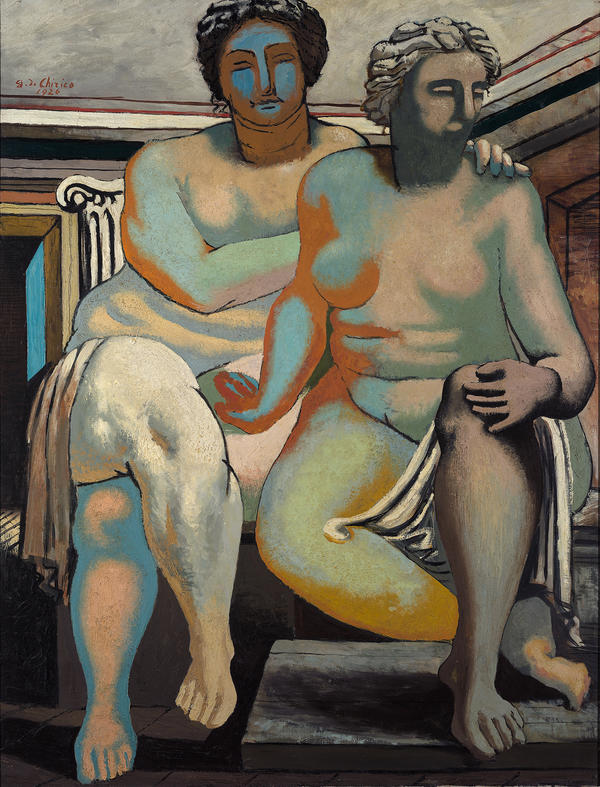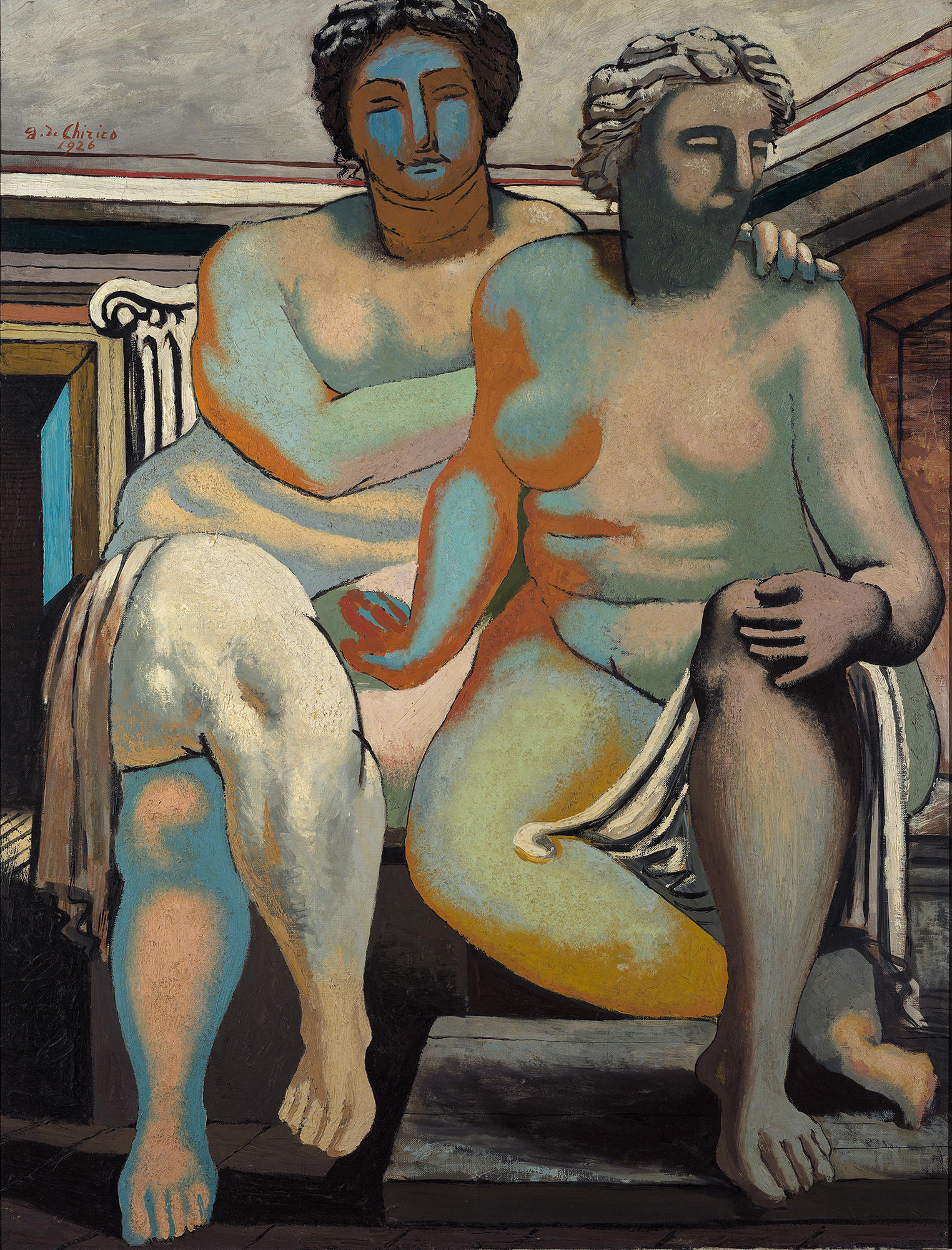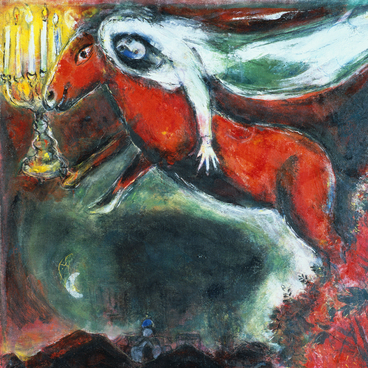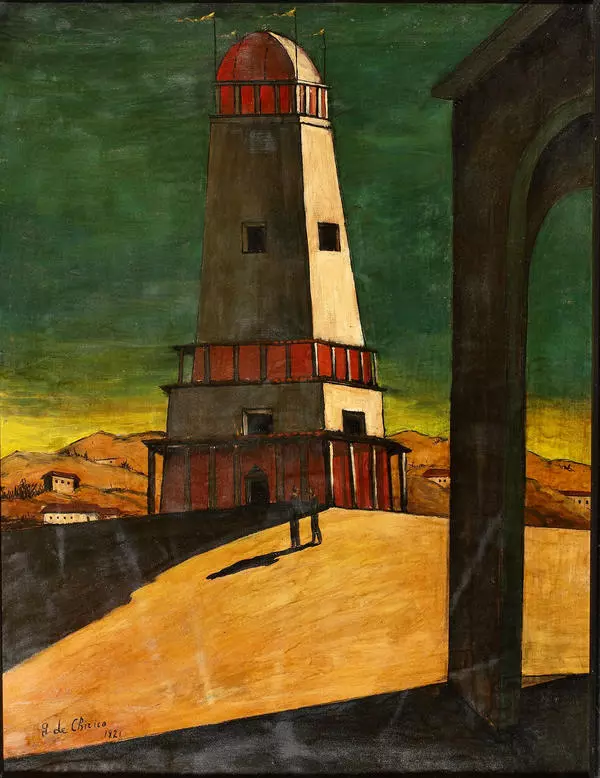After 1925, Italian metaphysicists began to follow a strict adherence to forms, which is traditional for Italian art, and classical trends. Despite the classical presentation of objects, they are often taken out of the conventional context to create a game of reality and vision, so the objects acquire a secret, magical meaning. In his painting Roman Women (1926), Giorgio de Chirico chose a motif that is typical for metaphysical painting. It evokes antique associations with contemporary life and an orientation toward the inner world. The artist depicts two huge female figures standing motionlessly with demonstrative plasticity. They resemble Roman statues. Gaps in the images of the faces are a unique contrast of plasticity and heaviness. This creates the impression that the images are born from the deep subconscious, which is a kind of non-existence, and at the same time the reverse process of going into a stupor takes place. In front of ancient ruins, the figures seem to remain between a vision and reality, thus bringing us into the metaphysical sphere. This attraction to ‘internal’ images was typical for the artist’s works in this period. Just like Dadaism, metaphysical painting prepared the world for surrealism.
Roman Women
Creation period
1926
Dimensions
116x89 cm
116х89
116х89
Technique
oil on canvas
Collection
Exhibition
6
Open in app#1

Giorgio de Chirico
Roman Women
#2
read morehide
00:00
00:00
1x
Roman Women
Creation period
1926
Dimensions
116x89 cm
116х89
116х89
Technique
oil on canvas
Collection
Exhibition
6
Open in app
Share



